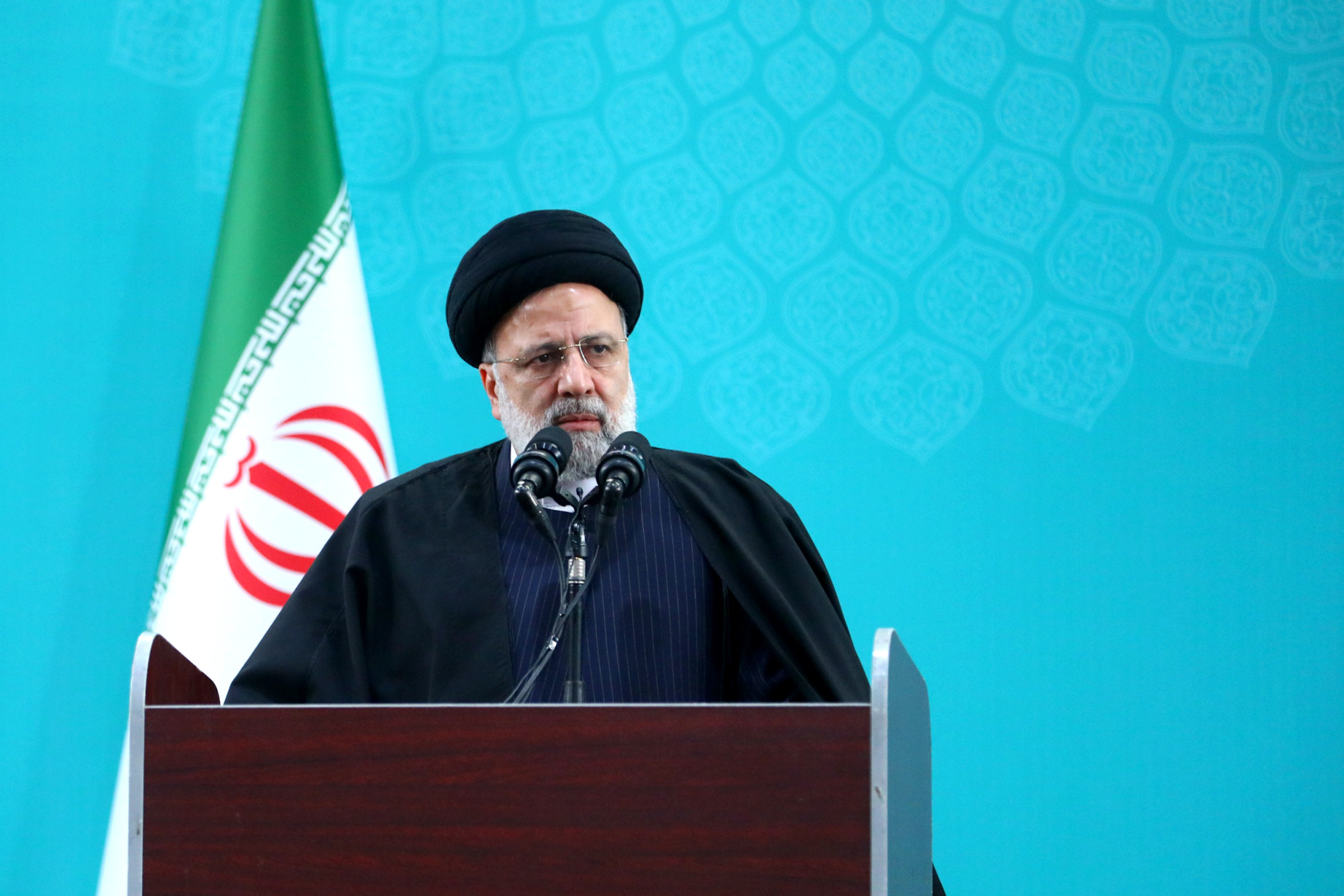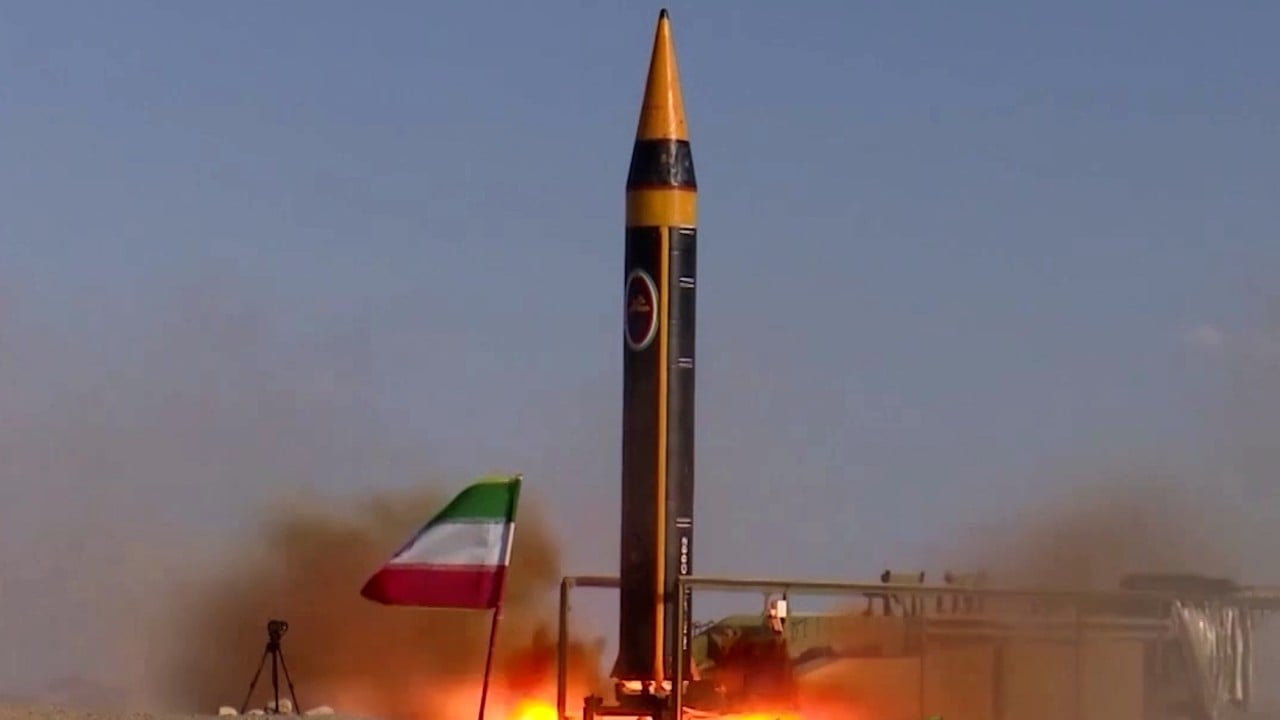The Iranian Soraya satellite was placed in an orbit about 750 kilometres above the Earth’s surface with its three-stage Qaem 100 rocket, the state-run IRNA news agency said. It did not immediately acknowledge what the satellite did, though telecommunications minister Isa Zarepour described the launch as having a 50-kilogram payload.

The launch was part of Iran’s Revolutionary Guards’ space programme alongside Iran’s civilian space programme, the report said.
Footage released by Iranian media showed the rocket blast off from a mobile launcher, with a religious verse referring to Shiite Islam’s 12th hidden imam written on its side.
An Associated Press analysis of the footage suggested the launch happened at the Guard’s launch pad on the outskirts of the city of Shahroud, about 350 kilometres east of the capital, Tehran. Iran’s three latest successful satellite launches have all happened at the site.
There was no independent confirmation Iran had successfully put the satellite in orbit. The US military and the State Department did not respond to a request for comment.
The US had previously said Iran’s satellite launches defy a United Nations Security Council resolution and called on Tehran to undertake no activity involving ballistic missiles capable of delivering nuclear weapons. UN sanctions related to Iran’s ballistic missile programme expired last October.
Under Iran’s relatively moderate former president, Hassan Rowhani, the Islamic Republic slowed its space programme for fear of raising tensions with the West. Hardline President Ebrahim Raisi, a protégé of Supreme Leader Ayatollah Ali Khamenei who came to power in 2021, has pushed the programme forward.
The US intelligence community’s 2023 worldwide threat assessment said the development of satellite launch vehicles “shortens the timeline” for Iran to develop an intercontinental ballistic missile because it uses similar technology.

Intercontinental ballistic missiles can be used to deliver nuclear weapons. Iran is now producing uranium close to weapons-grade levels after the collapse of its nuclear deal with world powers. Tehran has enough enriched uranium for “several” nuclear weapons, if it chooses to produce them, the head of the International Atomic Energy Agency repeatedly has warned.
Iran has always denied seeking nuclear weapons and says its space programme, like its nuclear activities, is for purely civilian purposes. However, US intelligence agencies and the IAEA say Iran had an organised military nuclear programme up until 2003.

The involvement of the Guard in the launches, as well as it being able to launch the rocket from a mobile launcher, raise concerns for the West. The Guard, which answers only to Khamenei, revealed its space programme back in 2020.
Over the past decade, Iran has sent several short-lived satellites into orbit and in 2013 launched a monkey into space. The programme has seen recent troubles, however. There have been five failed launches in a row for the Simorgh programme, another satellite-carrying rocket.
In December, Iran sent a capsule into orbit capable of carrying animals as it prepares for human missions in the coming years.
Meanwhile on Saturday, the US military’s Central Command said it “conducted air strikes against a Houthi anti-ship missile that was aimed into the Gulf of Aden and was prepared to launch”.
“US forces determined the missile presented a threat to merchant vessels and US Navy ships in the region, and subsequently struck and destroyed the missile in self-defence,” a Central Command statement said. “This action will make international waters safer and more secure for US Navy and merchant vessels.”
The Iranian-backed Houthis did not immediately acknowledge this seventh round of strikes. The rebels have been targeting shipping since November in what they describe as an effort to stop the Israel-Gaza war. However, their targets have increasingly tenuous – or no – ties to Israel or the conflict.
In Iraq, a coalition of militias calling itself the Islamic Resistance in Iraq announced it had launched a missile salvo on Saturday at al-Asad airbase in the west of the country that is used by the US military, the latest in a series of attacks by the group on US forces in Iraq and Syria.

The Central Command confirmed the attack, saying “Iranian-backed militants fired several shells and ballistic missiles” at the base. It said the base’s defence systems “intercepted most of the missiles, while others fell on the base”.
The command’s statement said an unspecified number of US personnel had head injuries and at least one Iraqi military service member was also injured.
An Iraqi military official said 12 missiles were fired at the base, of which four were shot down and eight fell within the base. The official spoke on the condition of anonymity because they were not authorised to share the details with journalists.


